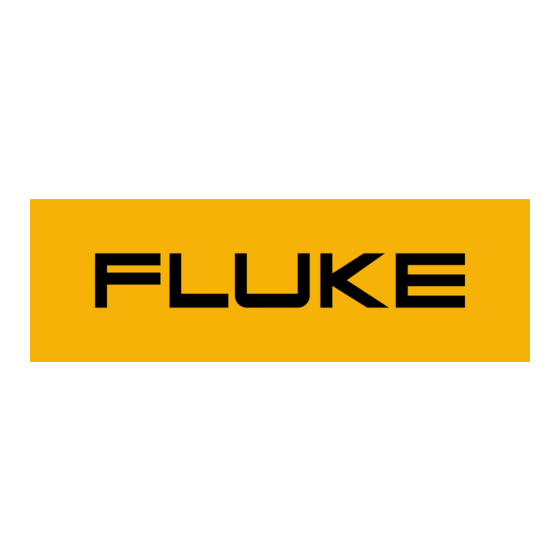
Table of Contents
Advertisement
Quick Links
The OptiFiber
module attaches to a Versiv
rugged, hand-held tester that lets you locate, identify, and
measure reflective and loss events in multimode and singlemode
fibers. Typical maximum test ranges are 35 km maximum at
1300 nm for multimode fiber and 130 km maximum at 1550 nm
for singlemode fiber.
Accessing the Product Manuals
This guide provides basic information to help you get started
using the tester. For more detailed information, see the latest
versions of the Versiv Series Users Manual and the Versiv Series
Technical Reference Handbook provided on the Fluke Networks
website.
Symbols
Warning or Caution: Risk of damage or destruction to
W
equipment or software. See explanations in the manuals.
X
Warning: Risk of fire, electric shock, or personal injury.
Warning: Class 1 or Class 2 lasers. Risk of eye damage
*
from hazardous radiation.
Consult the user documentation.
Do not connect this equipment to public communications
j
networks, such as telephone systems.
Conforms to the Appliance Efficiency Regulation
(California Code of Regulations, Title 20, Sections
1601 through 1608), for small battery charging
systems.
*4959156*
PN 4959156, January 2018
2018 Fluke Corporation
All product names are trademarks of their respective companies.
OptiFiber
Getting Started Guide
Pro Optical Time Domain Reflectometer (OTDR)
®
or Versiv 2 main unit to make a
™
Pro
®
OTDR
Advertisement
Table of Contents

Summarization of Contents
Getting Started Guide Overview
Product Description and Manual Access
Introduces the OptiFiber Pro OTDR module and guides on accessing manuals.
Understanding Safety and Compliance Symbols
Explains key symbols related to safety and product compliance.
Hardware Controls and Indicators
Power Button Functionality
Describes the power button's role in turning the product on/off and indicating charge status.
Safety Information
General Safety Precautions
Covers essential warnings to prevent fire, electric shock, and personal injury.
Safety Warnings and Component Identification
Laser Safety Precautions
Details warnings and precautions related to Class 1 and Class 2 laser products.
Connectors, Keys, and LEDs
Identifies and describes the physical ports, buttons, and indicators on the device.
Hardware Interface Details
Connectors, Keys, and LEDs Explained
Provides detailed descriptions of the ports, buttons, and indicators shown in Figure 1.
Performing an OTDR Test
Powering and Setting Up the Tester
Guides on charging the battery and configuring test settings on the home screen.
OTDR Test Setup and Compensation
Configuring Test Settings
Details how to select test type, fiber type, and test limits.
Compensate for Launch and Tail Cords
Explains the process of compensating for launch and tail cords for accurate measurements.
Conducting the OTDR Test
Connecting and Initiating Test
Details connector preparation and initiating the OTDR test procedure.
Analyzing and Saving OTDR Results
Examining Test Results
Describes the three formats (EventMap, TABLE, TRACE) for viewing OTDR results.
Saving Test Results
Instructions on how to save test results, including setting cable IDs.
Project and Cloud Service Management
About Projects
Information on setting up, monitoring, and organizing test jobs using projects.
Fluke Networks Cloud Services
Details on using LinkWare Live for cloud-based project storage and management.






Need help?
Do you have a question about the OFP2-100-S and is the answer not in the manual?
Questions and answers